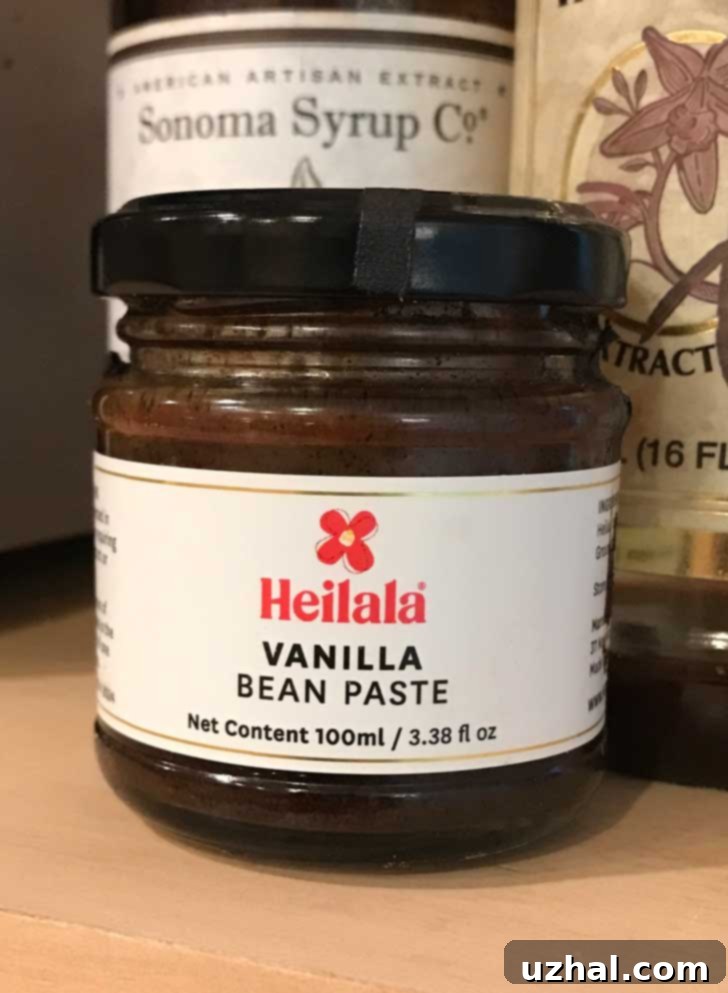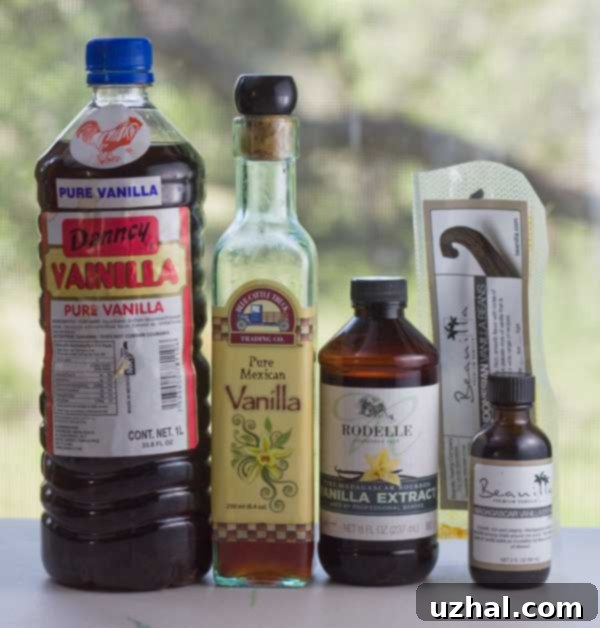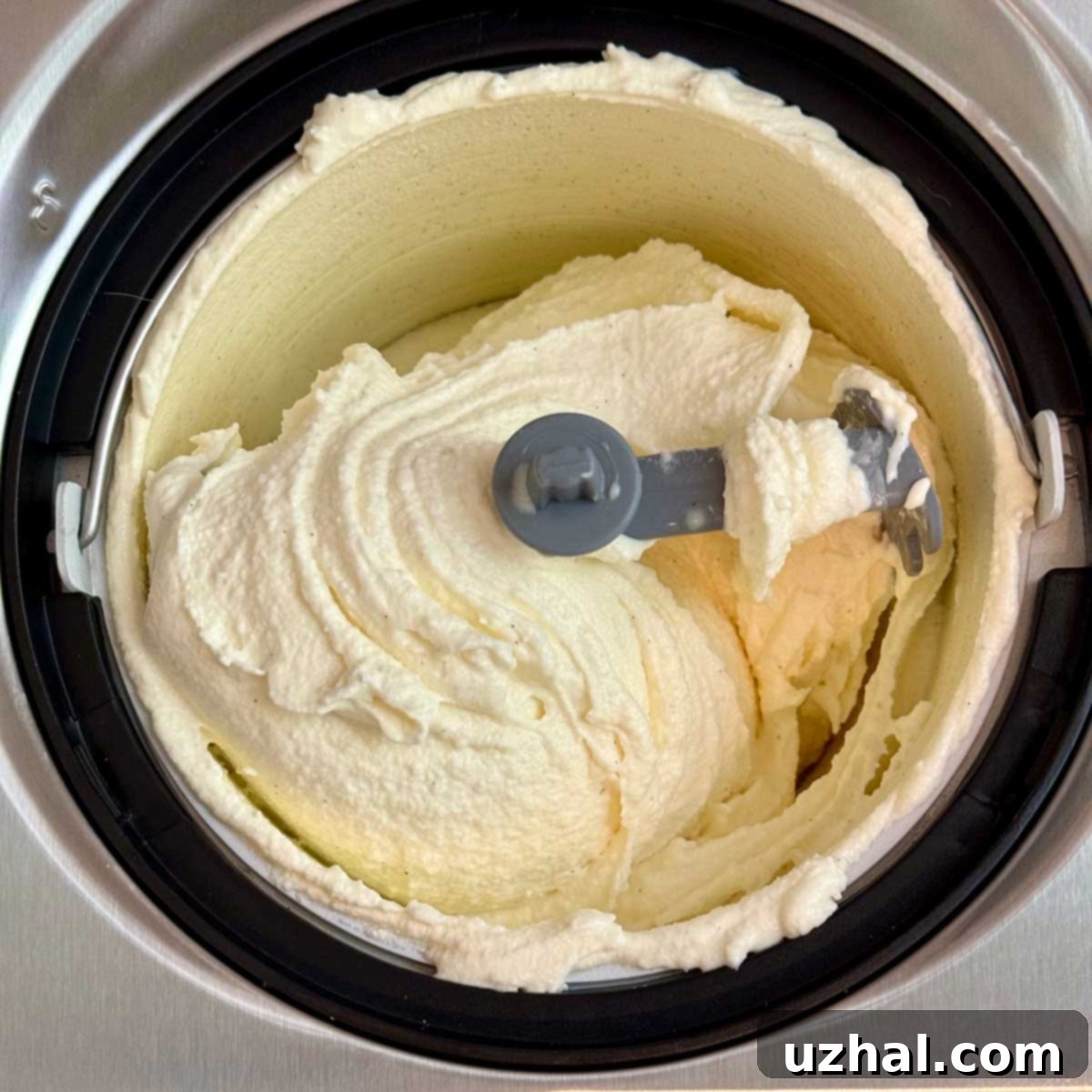The Ultimate Homemade Vanilla Gelato Recipe & Guide to Vanilla Bean Varieties
Embarking on a culinary journey to find the quintessential vanilla extract is much like exploring the world of fine wines. Just as different grape varietals yield distinct wines, the origin and processing of vanilla beans produce a spectrum of unique flavors. It’s truly challenging to pinpoint a single “favorite” because the best vanilla often depends on its application. For example, the bold, spicy notes of Mexican vanilla might perfectly complement a batch of chocolate chip cookies, while the subtly smoky, almost “burnt” undertones of Indonesian vanilla bean can add an unexpected depth to a creamy vanilla ice cream.
Madagascar vanilla, often considered the gold standard, boasts a classic, rich, and creamy profile that excels in nearly any dish requiring a pure vanilla flavor. In contrast, the delicate, floral, and fruity characteristics of Tahitian vanilla marry beautifully with caramel-based desserts or even elevate mixed drinks with its complex aroma. The more you delve into this diverse world, the more you realize that the old term “plain vanilla” simply doesn’t do justice to the incredible variety and depth of this beloved spice. Once you start tasting the nuances of different vanillas, your palate will never settle for anything less than extraordinary.
This post serves a dual purpose: firstly, it’s an opportunity to showcase my cherished vanilla collection and invite you, dear readers, to share your own favorite brands and types. Secondly, and perhaps most excitingly, it’s to present an absolutely terrific vanilla gelato recipe, a long-time reader recommendation that has truly stood the test of time. This recipe yields a gelato that is not only rich in flavor but also boasts a remarkably smooth texture, avoiding the common pitfalls of homemade frozen desserts.
Exploring the World of Vanilla: A Flavor Guide
Before we dive into the gelato recipe, let’s take a moment to appreciate the star ingredient: vanilla. Understanding the distinct characteristics of different vanilla types can dramatically enhance your baking and cooking. Each origin offers a unique flavor profile that can complement or transform your dishes.
Madagascar (Bourbon) Vanilla
Often considered the classic vanilla, Madagascar vanilla beans are long, slender, and bursting with a rich, creamy, sweet, and mellow flavor. They are the most common type and are highly versatile, making them ideal for almost any recipe that calls for vanilla. Think custards, cakes, cookies, and, of course, traditional vanilla ice cream or gelato. Their consistent quality and balanced flavor make them a staple in many kitchens.
Mexican Vanilla
Mexican vanilla offers a bolder, spicier, and sometimes smoky flavor profile, with subtle hints of chocolate. These beans are generally thicker and darker than Madagascar beans. Mexican vanilla is fantastic in recipes where you want a more pronounced vanilla presence, such as in chocolate desserts, spiced baked goods, or even savory dishes that benefit from a touch of warmth. It pairs wonderfully with cinnamon and chili.
Tahitian Vanilla
Tahitian vanilla beans are known for their shorter, plumper appearance and distinct floral, fruity, and cherry-like notes. Their aroma is intoxicatingly delicate and exotic. This type of vanilla is particularly suited for lighter desserts where its nuanced flavor can shine, such as fruit tarts, crème brûlée, or anything with caramel or tropical fruits. It’s also exceptional in mixed drinks and perfumes due to its exquisite fragrance.
Indonesian Vanilla
Indonesian vanilla, while less common than Madagascar, offers a deeper, earthier, and sometimes woodsy or slightly “burnt” flavor. It tends to be a bit more robust and smoky. This unique profile can be a delightful addition to chocolate desserts, coffee-flavored treats, or even in dishes where you want to add a layer of complexity, such as a rich vanilla ice cream or a dense cake.
Vanilla Gelato: A Culinary Delight
Our featured vanilla gelato recipe, originally adapted from The Ciao Bella Book of Gelato and Sorbetto: Bold, Fresh Flavors to Make at Home, stands out from many homemade ice cream recipes. It’s fantastic for those who appreciate a full-flavored vanilla experience without the excessive richness of high-fat ice creams. While still incredibly satisfying and luxurious, it uses a higher proportion of milk to cream, resulting in a less heavy, yet equally smooth and gratifying texture. This balance makes it a truly delightful dessert, perfect for any occasion.
One of the most impressive qualities of this recipe is its ability to resist turning rock-hard in the freezer, a common frustration with many homemade frozen desserts. There’s nothing worse than an icy, unyielding block of “ice cream,” is there? This gelato maintains its smooth, scoopable consistency, making it a definite winner in my book. You’ll find yourself reaching for a second scoop without a struggle!
Understanding Gelato Texture: Creamy vs. Icy
The beauty of gelato lies in its unique texture, which sets it apart from traditional ice cream. Gelato is typically churned at a slower speed, incorporating less air, and is served at a slightly warmer temperature. This results in a denser, more intense flavor and a silkier mouthfeel. While this recipe might not achieve the extreme velvety richness of some high-fat ice creams, it masterfully avoids any icy, granular texture, which is a crucial aspect of truly great gelato. It strikes the perfect balance.
Furthermore, this recipe avoids being overly eggy. I’ve encountered other gelato recipes that call for more than four egg yolks, which can sometimes overpower the delicate vanilla flavor and make the texture too dense or custardy. Four yolks provide just the right amount of richness and emulsification to create a beautifully smooth and creamy consistency without crossing into a dessert that tastes primarily of egg custard.
Vanilla Bean Paste: A Game-Changer
This recipe remains a favorite for its balanced richness, thanks to its higher milk-to-cream ratio. While a fresh vanilla bean imparts an unparalleled depth of flavor and visual appeal with its tiny black flecks, I often find myself without one on hand. That’s where vanilla bean paste becomes my go-to ingredient. It offers a convenient and equally delicious alternative, delivering intense vanilla flavor and those coveted specks, without the fuss of scraping a bean.

For my most recent batch, I opted for half a tablespoon of Heilala vanilla bean paste, a brand renowned for its exceptional quality and rich, authentic vanilla flavor. Using vanilla bean paste ensures that you don’t compromise on flavor or visual appeal, even when fresh beans aren’t readily available. It’s an essential pantry item for any serious baker or dessert enthusiast.
Advanced Tricks for the Perfect Gelato Texture
Even after all these years, this recipe continues to be my absolute favorite. Its success lies in the perfect balance of ingredients: just the right number of egg yolks and a harmonious ratio of milk to cream. This combination consistently delivers a delightful texture and flavor. However, I’ve recently experimented with a couple of minor tweaks that I believe elevate the gelato even further, pushing it towards an even smoother and richer experience without adding unnecessary fat.
One such innovation involves adjusting the dairy components slightly. Instead of the standard 2 cups of whole milk and 1 cup of heavy cream, I now sometimes use 1 cup of evaporated milk, 1 cup of whole milk, and 1 cup of heavy cream. Evaporated milk, which has some of its water content removed, brings a higher concentration of milk solids and lactose. This contributes to a silkier texture and a slightly richer mouthfeel, intensifying the dairy flavor without making the gelato overly heavy or fatty. The result is a more luxurious and deeply satisfying gelato, though the original milk and cream ratio still produces an outstanding result.
Another clever trick I’ve tried is incorporating 1 teaspoon of arrowroot powder into the cold milk and cream mixture before heating. Arrowroot is a fantastic thickening agent that, unlike some starches, doesn’t require high heat to activate its thickening power. In this context, adding it early may help to slightly improve the overall texture, contributing to an even smoother consistency and potentially helping to prevent the formation of ice crystals. While the recipe is undoubtedly excellent without this addition, the arrowroot offers a subtle enhancement that keen palates might appreciate. The jury is still out on whether it’s a critical step, but it’s a fun experiment for those looking to refine their gelato-making skills.
- Root Beer Gelato
- Vegan Lemon Squares
- Milk Bar Cookie Photos — Because 1 or 2 People Asked
- Double Crust Blueberry Pie
- Favorite Chocolate Chips
Recipe: The Best Homemade Vanilla Gelato

Vanilla Gelato
Anna
Pin Recipe
Ingredients
- 2 cups whole milk (460 grams)
- 1 cup heavy whipping cream (230 grams)
- ½ of a vanilla bean (optional, but highly recommended for authentic flavor)
- 4 large egg yolks
- ⅔ cup granulated sugar (130 grams)
- 1 pinch of salt
- 1 teaspoon vanilla extract or vanilla bean paste
Instructions
-
In a medium saucepan, combine the whole milk and heavy cream. If using a vanilla bean, carefully slice it lengthwise and scrape the tiny seeds into the milk mixture, then add the whole scraped pod as well. Heat the mixture over medium heat, stirring frequently to prevent scorching, until it reaches a temperature of 170 degrees F (77°C). Remove the saucepan from the heat and allow the vanilla bean to steep for a good 20 minutes; this infusion process is key to a deep vanilla flavor. Afterward, you may strain out the vanilla bean pod and any larger bits if you prefer a perfectly smooth gelato base.
-
In a separate mixing bowl, whisk together the egg yolks, granulated sugar, and a pinch of salt until the mixture is pale and creamy.
-
Return the saucepan with the vanilla-infused milk mixture to the stove and gently reheat it to 170 degrees F (77°C). To temper the egg yolks, slowly pour about half of the hot milk mixture into the egg mixture while continuously whisking to prevent the eggs from scrambling. Once combined, pour the tempered egg mixture back into the saucepan with the remaining milk. Continue to heat the mixture over medium-low heat, stirring constantly with a wooden spoon, until it reaches 185F (85°C) and thickens slightly to a custard-like consistency that coats the back of a spoon. Do not boil.
-
Immediately remove the custard from the heat. For a silky-smooth finish, strain it through a fine-mesh sieve into a clean bowl. For faster cooling, you can pour it into a rectangular casserole dish, which increases the surface area. Let it cool for approximately five minutes, then stir in the vanilla extract or vanilla bean paste, ensuring it’s thoroughly combined.
-
Allow the gelato base to cool slightly at room temperature, then cover it and chill it thoroughly in the refrigerator for several hours, ideally overnight. This chilling period is crucial for the flavors to meld and for the base to reach the optimal temperature for churning.
-
Once thoroughly chilled, pour the mixture into your ice cream maker and churn according to the manufacturer’s directions. This usually takes about 20-30 minutes, until the gelato reaches a soft-serve consistency. For a firmer gelato, transfer it to an airtight container and freeze for another hour or so before serving.
Nutrition
Calories: 230kcal
Carbohydrates: 21g
Protein: 4g
Fat: 15g
